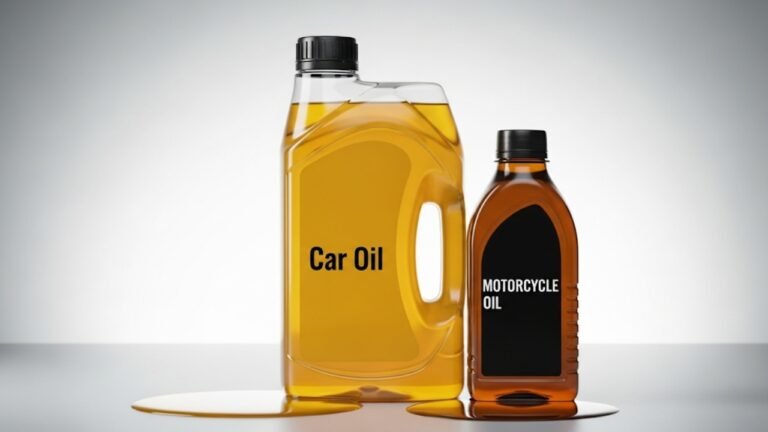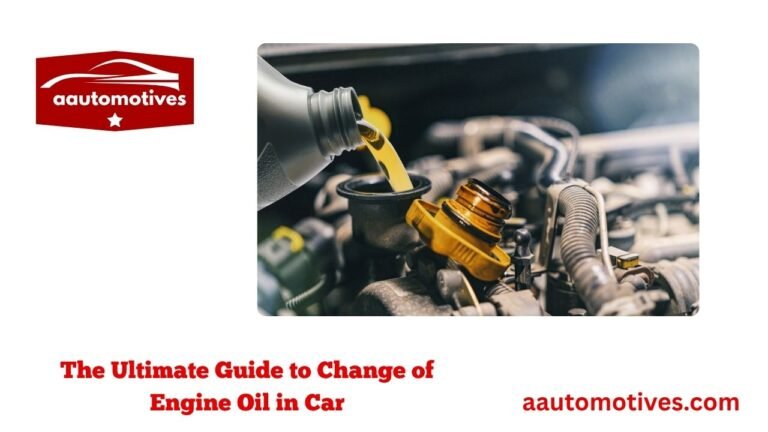Car Oil Filter Paper: Hero of Engine Health

We often obsess over the big things—engine size, horsepower, fuel economy. But there’s something small and humble under your hood that quietly protects your engine every single day: the car oil filter paper. It doesn’t get much credit, and honestly, most people don’t even think about it. But if you’ve ever dealt with engine sludge or worn-down parts before their time, chances are your oil filter—or more precisely, the filter paper—wasn’t doing its job.
Think of it like this: your engine is like the heart of your car. Oil is the blood. And the car oil filter paper? It’s like your liver, working nonstop to catch toxins and debris before they can do real harm. Without it, things go downhill fast.
In this article, I’ll walk you through what makes car oil filter paper such a crucial piece of the puzzle. I’ll use simple words and relatable stories, so even if you’ve never touched an oil filter in your life, you’ll get it. Ready? Let’s pop the hood.
Why Car Oil Filter Paper Matters More Than You Think

So, what makes it essential?
- It catches dirt, metal shavings, and carbon deposits
- It keeps oil flowing freely through the engine
- It extends engine life and reduces wear
- It helps maintain fuel efficiency
The filter housing might get all the attention, but it’s the paper inside that actually does the filtering. The car oil filter paper is made from specially treated cellulose or synthetic fiber. Its fibers trap microscopic particles—things you wouldn’t see with your naked eye, but which could wreak havoc inside your engine.
Here’s a simple table to show how it compares:
| Component | Function | What Happens Without It |
| Engine oil | Lubricates engine parts | Friction increases, parts wear faster |
| Car oil filter paper | Traps contaminants in oil | Dirty oil damages engine internals |
| Filter canister | Holds the filter and channels oil | Oil may bypass if filter is damaged |
The job of car oil filter paper is quiet but powerful. Every minute you drive, it’s straining out impurities—just like your kidneys filter blood. You wouldn’t ignore your kidneys, would you?
How Car Oil Filter Paper Is Made—and Why That Matters
Ever wondered what your car oil filter paper is actually made of? It’s not your average notebook paper. This stuff is engineered for battle.
Most filter paper is either:
- Cellulose-based: Made from wood pulp. It’s cost-effective and commonly used in standard filters.
- Synthetic (microglass or polyester): Finer fibers, better at capturing small particles, lasts longer.
Some high-end filters use blended media, combining both for better performance. These papers are treated with resins that make them strong, oil-resistant, and able to hold their shape even under pressure.
Here’s what makes good filter paper great:
- Pore size: This determines how small the trapped particles can be. Smaller is better—but only if it doesn’t block oil flow.
- Thickness: Thicker paper can trap more debris, but also needs to allow oil to flow smoothly.
- Pleating: The paper is folded like an accordion. More pleats = more surface area = more filtering power.
The car oil filter paper might be small, but it goes through intense quality control. Manufacturers test them under high temperatures, rapid oil flow, and contaminated oil to make sure they can handle real-world abuse.
Just like how the quality of coffee filters affects your morning brew, the quality of oil filter paper affects your engine’s health. Cheap filters? Think of them like using tissue paper to strain coffee—it’s gonna be messy, and something important will slip through.
Signs Your Car Oil Filter Paper Might Be Failing
So, how do you know if the car oil filter paper is doing its job—or failing?
Here are some real-world signs:
- Dirty oil despite recent changes
If your oil turns black right after a change, the filter paper may not be catching particles. - Decreased performance or fuel economy
Sludge in your oil system can cause friction and slow the engine down. - Metallic noises
If contaminants aren’t being caught, they can circulate and damage metal components. - Oil pressure warning light
A clogged filter can reduce oil flow and trigger that dreaded dashboard light.
I had a friend who drove an older Honda Civic. He always used budget filters. One winter, the engine seized. The mechanic said the filter had collapsed inside. The filter paper couldn’t handle the pressure and failed. That cheap filter cost him a whole engine.
The point? Never overlook the quality of the car oil filter paper inside your filter. It’s the invisible hero keeping your engine clean.
Choosing the Right Car Oil Filter Paper for Your Ride
Here’s the tricky part: you can’t buy just the filter paper alone. But you can choose an oil filter with high-quality paper inside. And yes, there’s a big difference.
Look out for these when buying filters:
- Brand reputation: Stick with names known for quality. Fram, Bosch, Mobil 1, and WIX are trusted for a reason.
- Filter type: Synthetic filters usually use synthetic filter paper—great for long oil change intervals.
- Vehicle compatibility: Some engines require filters with higher flow rates. Don’t assume one size fits all.
- Usage type: Daily driver? Track car? Diesel truck? Each needs a different filtering setup.
I drive a mid-size SUV, and after trying a few options, I settled on a synthetic media filter. It lasts for 10,000 miles, and I’ve noticed smoother engine performance and cleaner oil during changes.
Here’s a quick bullet list to help you decide:
- For everyday driving → OEM or cellulose filters
- For synthetic oil → Synthetic or blended media
- For high-mileage engines → High-capacity filters with synthetic paper
- For racing or heavy-duty → Premium filters with microglass media
The secret is in the paper. A good outer shell means nothing if the car oil filter paper inside is flimsy or low-grade.
When to Replace Your Car Oil Filter Paper (and Why Timing Matters)
You probably already know you should change your oil every 3,000 to 10,000 miles, depending on your oil type. But your oil filter—specifically the car oil filter paper inside—has its own lifespan.
Here’s the deal: once the filter paper becomes saturated with debris, it loses effectiveness. It might:
- Start bypassing oil (sending unfiltered oil to your engine)
- Collapse under pressure
- Allow sludge buildup in the oil system
The golden rule? Change your oil filter with every oil change.
You might be tempted to skip it and save a few bucks. But remember: the oil is only clean if it stays clean. And that depends on the filter paper.
Some people swear by extended oil intervals. But even if your oil looks fine, the filter may be clogged. I once tried stretching a filter for 15,000 miles. Big mistake. My oil came out thick and full of grit.
You can’t see the filter paper inside, but your engine will feel it when it’s no longer doing its job.
The Evolution of Car Oil Filter Paper: From Then to Now
It’s wild to think how far car oil filter paper has come. Back in the early days of automobiles, engines didn’t even have oil filters. The oil just circulated—dirty and filled with debris—until it either broke the engine or evaporated. Mechanics had to do full engine flushes regularly. Talk about a messy and costly routine.
As engines became more complex, the need for oil cleanliness became obvious. That’s when the first oil filters came in—but even those had basic materials that would choke easily or degrade under heat.
Now? Things have changed.
Modern car oil filter paper is made using advanced engineering techniques:
- Nanofiber technology allows even finer filtration without blocking oil flow.
- Multi-layer filtration captures more contaminants in fewer passes.
- Synthetic-blend media combines the durability of plastic fibers with the absorption of cellulose.
All these changes are a response to the fact that engines are now precision machines. One speck of metal in the wrong place can throw off the timing, wear down parts, or affect emissions.
So, the evolution of car oil filter paper isn’t just a story of engineering—it’s about responding to the needs of modern vehicles, stricter environmental laws, and smarter consumers.
How Environmental Conditions Affect Filter Paper Performance
Not all roads are equal—and neither are the environments we drive in. The performance of car oil filter paper can be greatly affected by your surroundings.
Let me give you two real-life scenarios:
- Desert Heat in Arizona: My cousin lives in Phoenix. His car deals with 110°F heat regularly. The oil thins out quickly in that heat, and filter paper is under constant pressure. He uses high-temp-rated synthetic filters to keep things clean.
- Winter in Minnesota: A friend up north struggles with -20°F mornings. Cold oil flows like molasses, and if the filter paper isn’t strong, it can tear or collapse. He swears by microglass filters that are cold-weather tested.
Different driving environments place different demands on your oil and your filter. Here’s a quick breakdown:
| Condition | Effect on Filter Paper | Best Choice |
| High heat | Thins oil, increases flow rate | Synthetic filter paper |
| Freezing temperatures | Thickens oil, strains filter structure | Microglass or reinforced synthetic media |
| Dusty/off-road driving | More contaminants, higher debris load | High-capacity cellulose/synthetic blend |
| Stop-and-go traffic | Frequent heating/cooling, small debris formation | Long-life filters with fine filtration |
Bottom line? Your car oil filter paper should match your environment. It’s not a one-size-fits-all situation. Climate matters. Driving style matters. Even the kind of oil you use matters.
How Mechanics Assess Car Oil Filter Paper Quality
Ever wondered how professional mechanics judge the quality of a filter? It’s not just about the brand or price. A good mechanic will look deeper—literally.
Here’s what they check:
- Uniformity of the pleats: Uneven spacing can reduce effective surface area.
- Tear resistance: They’ll gently stretch the paper to see if it rips easily.
- Resin strength: A quick solvent test can show if the resin treatment is strong enough to resist oil.
- Debris hold capacity: Some pros cut open used filters to see how well they collected contaminants.
I once saw a mechanic slice open two filters—one from a discount store and one premium brand. The discount one had 20 pleats and paper as thin as tissue. The premium one? Nearly 60 pleats and thick, reinforced paper. Guess which one performed better?
Great car oil filter paper feels like thick coffee filter material—firm but breathable. If it’s thin, flaky, or loosely packed, it won’t last long. And when it fails, your engine pays the price.
Car Oil Filter Paper and Engine Longevity: The Hidden Link
Let’s talk longevity. If you’re planning to drive your car for more than 100,000 miles (which most of us do these days), then your car oil filter paper becomes a major factor in the engine’s life expectancy.
Here’s the truth: contaminants are unavoidable. Even brand-new engines shed microscopic metal particles. Combustion creates carbon residue. And every time you drive through dusty air or rain, some of that gets into your oil system.
Good oil helps. But oil alone can’t clean itself. That’s the job of the filter—and specifically, the filter paper.
If your filter paper is doing its job:
- Your engine components stay lubricated without friction
- Your oil channels don’t get blocked by sludge
- Your piston rings and valves stay cleaner
This reduces wear and tear, improves performance, and ultimately helps your engine last longer. It’s like brushing your teeth every day to prevent cavities. You might not notice the benefits right away, but the long-term payoff is massive.
In short, if you love your car, love its filter paper too.
Myth-Busting: Common Misconceptions About Oil Filter Paper
Let’s bust some myths that still float around forums and garages:
Myth 1: All filters are basically the same
Nope. Not even close. The difference in car oil filter paper quality can mean the difference between clean oil and a clogged engine.
Myth 2: You can reuse oil filters
Please don’t. Filter paper degrades over time. Once it’s saturated or exposed to heat, it loses effectiveness—even if the casing looks fine.
Myth 3: If you use synthetic oil, you don’t need to change filters as often
Actually, synthetic oil can carry even more contaminants due to extended intervals. That means your filter paper has to work harder, not less.
Myth 4: High-flow filters mean better performance
Only if the filter paper can still trap particles. A “high-flow” filter that lets everything pass through is just… a pipe.
Understanding these misconceptions can help you make better choices. Don’t fall for marketing tricks. Instead, look for science-backed specs—filtration rating, burst pressure, and media type.
Final Thoughts: Treat the Small Things Like They Matter
Sometimes, life teaches us through the little things. Like how a $7 filter can protect a $7,000 engine. That’s the quiet genius of car oil filter paper—unseen, unheard, but completely essential.
When I started paying attention to my car’s filter quality, I noticed something unexpected: smoother starts, fewer rattles, better fuel efficiency. It’s like the engine was finally breathing clean air after years of pollution.
So here’s my friendly advice: next time you change your oil, think about the filter paper. Ask your mechanic what filter they’re using. Do a little research. Spend a few more bucks for something that lasts longer and works harder.
Because your engine deserves clean, reliable protection—and that starts with the car oil filter paper inside your oil filter.






